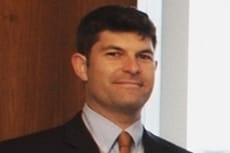Interview with NYSCF Fellow Marco Seandel

Marco Seandel, MD, PhD, was named a NYSCF – Druckenmiller Fellow in 2008 and is in his third year of the NYSCF Fellowship Program. He was recently appointed to Assistant Professor of Cellular and Developmental Biology. On August, 6th, 2010, Marco’s co-authored paper on stem cells of the testicles was published in Cell. Read an interview with Marco and learn about his research and how he became a scientist.
Did any experiences in your childhood shape your interest in science and medicine?
I got to where I am professionally by a very indirect route, which led me from a love of the natural environment to ecology and evolution and then eventually to medicine. Personally, I was influenced a lot by my father, Silas Seandel, who is a sculptor by profession. I think I internalized his “contrarian” instinct to a large extent, which can be useful for scientists. Also, artists and scientists are similar in that both must be able to shed pre-conceived notions about what is right in order to be successful.
How did you end up becoming a scientist? Did you always want to be a researcher?
It all started with fish. (Thanks to my dad, too, for taking me fishing when I was four.) Actually, in college, I got involved with an effort to restore the historical Atlantic salmon fishery to the Connecticut River. I had a great mentor named Dr. Carol Folt who really taught me how to do science. This led to an undergraduate thesis and my first publication which was in the Canadian Journal of Fisheries and Aquatic Sciences and of which I am extremely proud. I came very close to pursuing a Ph.D. in marine ecology but decided pretty late in the game to go into medicine. The excitement of potentially learning a secret about the natural world that no one else on earth knows and that could change peoples’ lives is what keeps me going.
Can you explain your latest experiment in terms the public can understand?
A major component of my work is to understand the behavior of the stem cells of the testicle. These cells have a very unique ability to spontaneously “regress” or convert to a form that closely resembles an embryonic stem cell. The comparatively flexible or plastic behavior of these cells suggests that the conversion process may occur in a relatively small number of steps. Therefore, we are trying to identify the chemicals or genes that push this process forward using a system in which the cells actually turn color when the conversion begins. This should allow us to identify the earliest molecular events in the process. Hopefully, these events can then be triggered at will to produce stem cells in the future for therapeutic purposes.
What qualities do you think distinguish scientists from other professions (lawyers, doctors, academics, etc)?
Two different attributes come to mind. First, I think many of us in the life sciences enjoy the manual labor of our experiments on a visceral level. There is a lot of tinkering with equipment and refining of recipes that goes on before an experiment can be executed properly. It is a lot like cooking. You need good hands. The second attribute is that scientists are particularly motivated by the intermittent nature of the rewards. There is a certain satisfaction in getting the experiment to work even if the result is not as anticipated. But what we really long to show is that the hypothesis is true. Of course, the vast majority of experiments do not work out as hoped for but the excitement when things do work is very powerful. So it is a series of intermittent rewards–long dry spells interspersed with very exhilarating moments in the lab.
What is your new paper about?
The most fundamental and persistent dilemma in the life of a stem cell is the decision of whether to reproduce (a process known as self-renewal) or to fully mature (a process known as differentiation). We identified a novel set of chemicals inside the cell, much like a microprocessor in a computer, that allow it to interpret specific information from the surrounding external environment that allow the stem cell to continually and effectively re-assess the decision of whether to self-renew. It turns out that this decision is a lot like approaching a yellow traffic light—the decision to stop or go depends on many factors, including whether the road is wet, for example. In the case of stem cells, environmental signals known as growth factors play an important role in this decision-making process and our findings in this paper demonstrate how such decisions are made by the cell and how this process could go wrong in certain diseases, such as cancer, and also in normal aging.